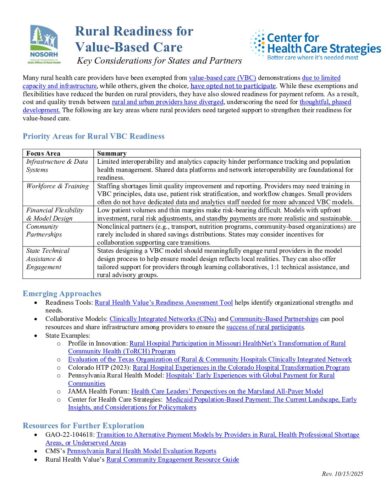... more
Even before the COVID-19 crisis hit, the U.S. had historically underinvested in primary care, spending only five to seven cents of every health care dollar on primary care services. The pandemic exacerbated the situation by decreasing provider revenue, particularly for ... more
In many state Medicaid programs, primary care is the foundation supporting other state health care priorities, such as value-based care and health equity. Better primary care is associated with improved health outcomes, lower health care costs, and reductions in health... more
Many providers are facing financial shortfalls due to postponed elective surgeries and decreased patient visits during the COVID-19 pandemic. While some aid is available through the CARES Act and the Centers for Medicare & Medicaid Services (CMS), many providers, es... more
Medicaid plays an important role in meeting the health care needs of more than 92 million people across the United States.[efn_note]Medicaid.gov. “July 2023 Medicaid & CHIP Enrollment Data Highlights.” Available at: https://www.medicaid.gov/medicaid/program-inf... more
People struggling to secure food and housing also struggle to stay healthy. This reality is glaringly obvious, and painfully urgent for so many. But what can Medicaid do? Over my four years with the Center for Health Care Strategies (CHCS), I’ve helped state Medic... more
Palliative care improves the quality of life of patients with serious illness through symptom management, caregiver support, and care coordination. Homebound individuals, however, often find it difficult to access these services and as a result, may forego palliative c... more





